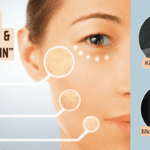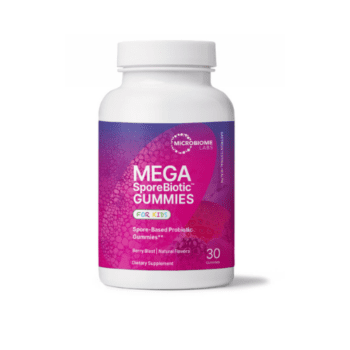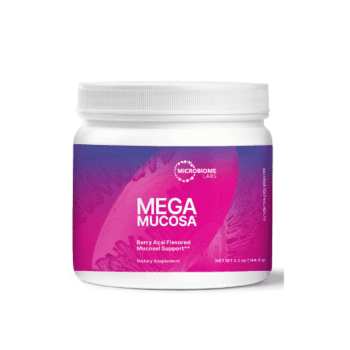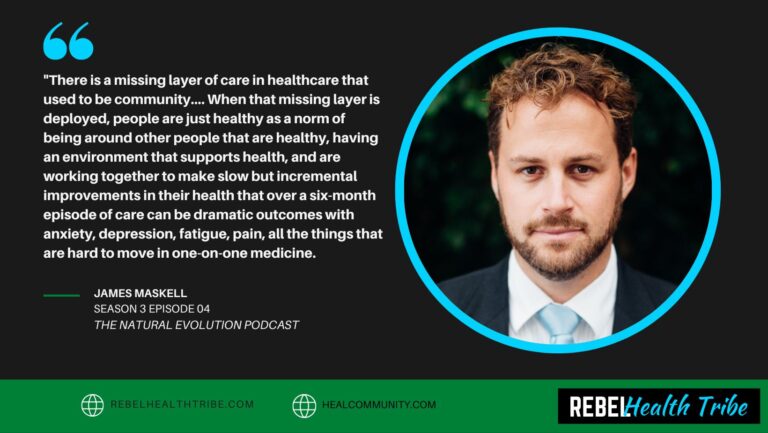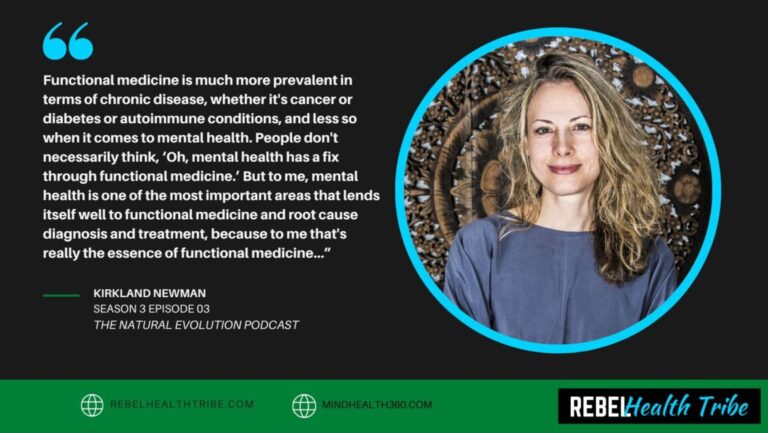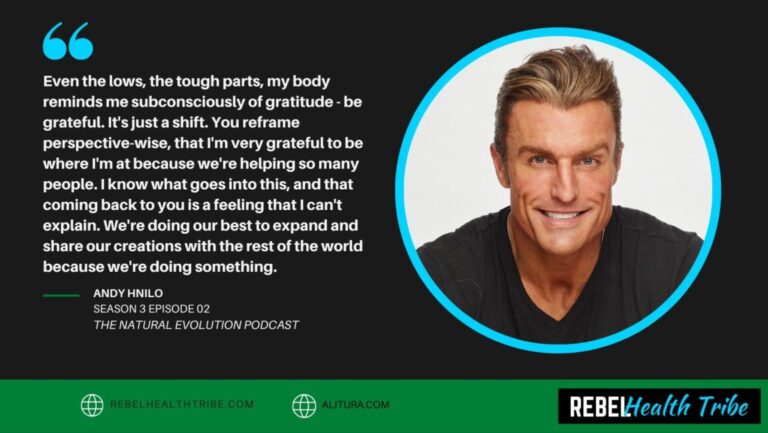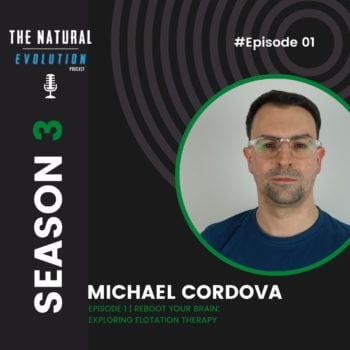
More Posts from
AutoImmune & Chronic Disease
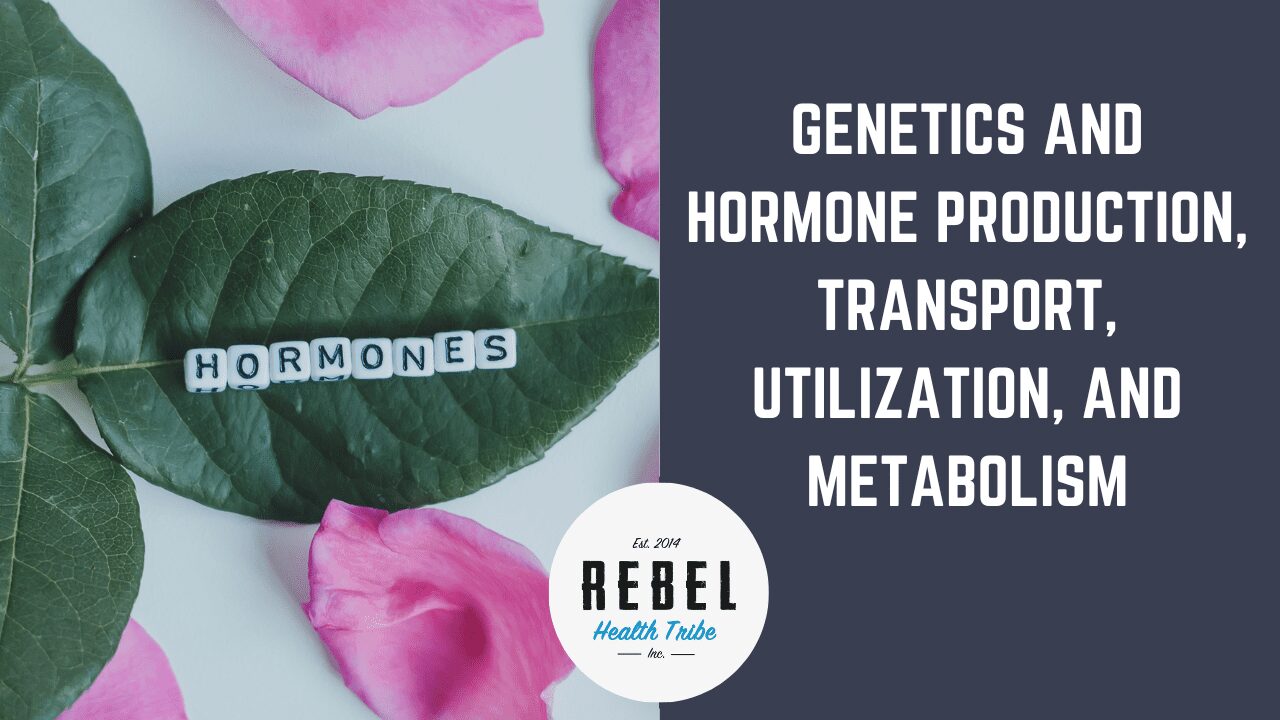
Genetics and Hormone Production, Transport, Utilization, and Metabolism
Our genetics play a larger role in our hormones than
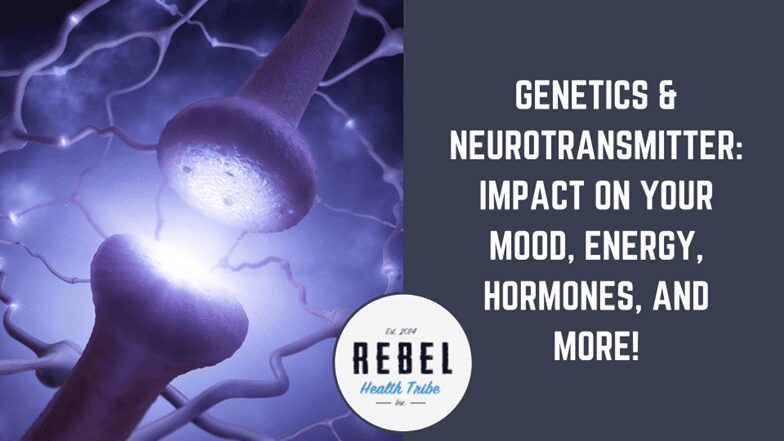
Genetics & Neurotransmitters: Impact on Your Mood, Energy, Hormones, and More!
Have you wondered why an antidepressant didn’t work for you?
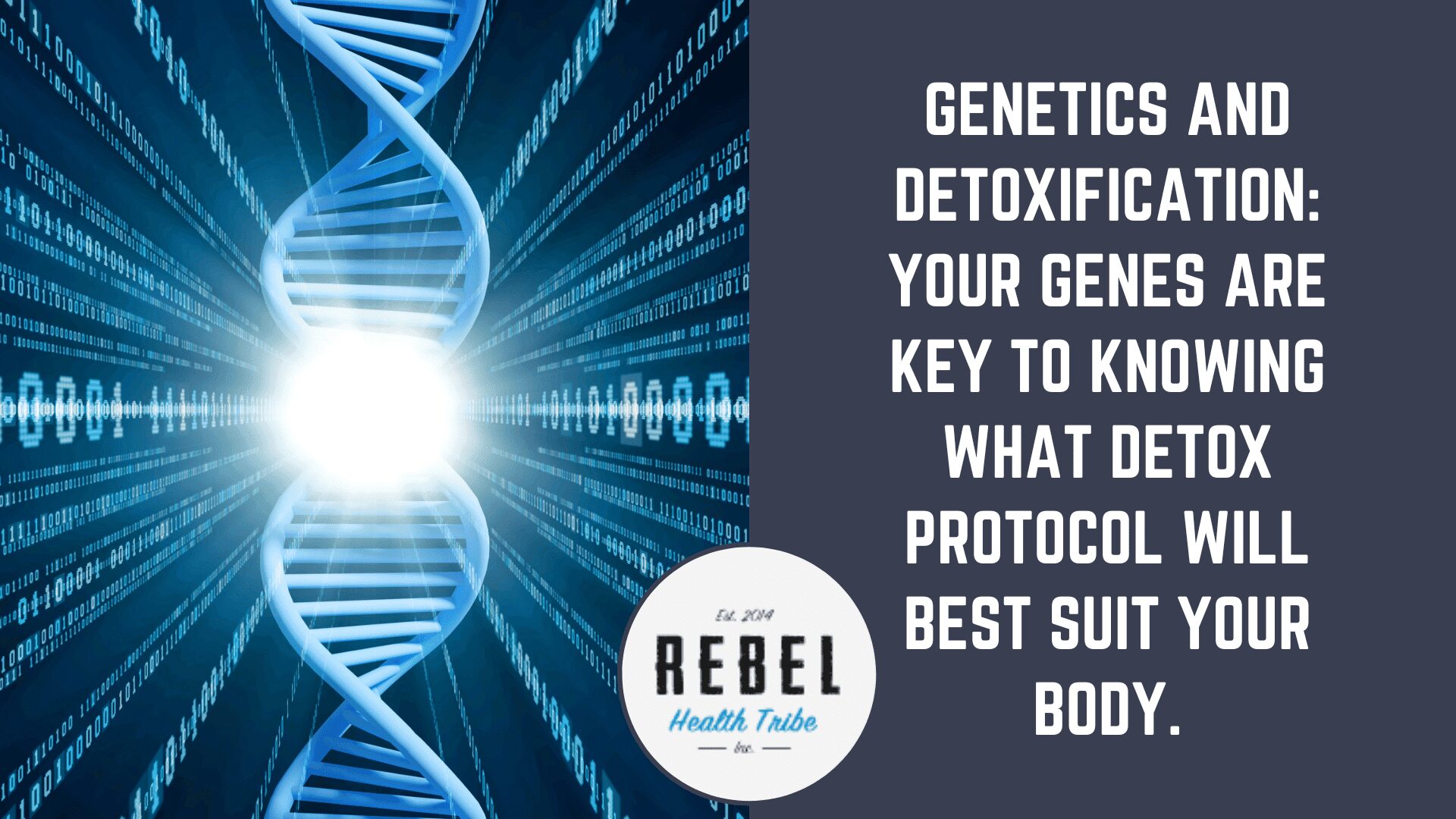
Genetics and Detoxification: Your genes are key to knowing what detox protocol will best suit your body.
https://vimeo.com/821487331 If you’ve ever bought a detox kit off
How I Came To Love MegaSporeBiotic, the World’s Best Probiotic
Never did I think that some tiny spore-forming bacteria would be responsible for radically shifting my professional career or my life. Two years ago, I didn’t even know that such organisms existed.
I was plodding along, moving from one ‘professional-grade’ probiotic product to another, trying to find something that would really help my clients and those who attended classes and workshops that I taught. I understood that our microbiome, the trillions of tiny organisms that make our body home, was extremely important – but I was becoming increasingly frustrated with the lack of consistent positive results after trying at least twenty different brands of the ‘best’ probiotics on the market.
These included, but definitely not limited to: Klaire, Biokult, VSL#3, Innate Response, Designs for Health, Standard Process, Orthomolecular, Theralac, Garden of Life, Custom, and many other very respected, very expensive practitioner-only products.
NOTE: I still use products made by several of these companies, and am definitely not claiming these companies to be misleading, producing poor quality products, or anything of the sort.
This was the spring of 2014 and I was about to give up on probiotic supplements, as a whole – and move more towards only utilizing fermented foods. The problem with this approach, which concerned me, was that at least half of the clients I worked with did very poorly with fermented foods and couldn’t tolerate them at all – which is actually quite common in people with GI infections, overgrowths, inflammation, etc…
Finally, I came across something different. While listening to an episode of Chris Kresser’s (well-known Functional Medicine Practitioner) podcast, I heard him discuss soil-based organisms. The product he mentioned, specifically, was Prescript-Assist. Chris went on to explain that he’d seen better results with these type of organisms, and this product specifically, when compared with his experience using conventional probiotics – which generally consist of various strains of lactobacillus and bifidobacterium. With nothing to lose, I decided to give this product a shot. If nothing else, it was something different than what I’d been doing.
The definition of insanity is doing the same thing over and over again, but expecting different results.
– Albert Einstein
Initially, the results were rather encouraging. More people saw positive results than I had seen with any conventional probiotics, that’s for sure. There were still, however, many people who didn’t do well, or saw nothing at all. The improvements were generally very subtle for most people, if noticeable at all. Yes, it was better… but nothing really spectacular.
That’s when I stumbled upon a webinar titled ‘Forget What You Know About Probiotics‘, directed at practitioners, and hosted by Dr. Thomas Bayne, DC and Kiran Krishnan (Microbiologist) – the founders of Physicians Exclusive and creators of MegaSporeBiotic.
Needless to say, the information presented definitely peaked my interest. It was different, intriguing, and made sense.
I decided to give it a whirl.
Within a few weeks, she was reporting back that her allergies and
asthma were almost non-existent and she felt great.
As mind-blowing as this was, it was about to get even more unbelievable.
The first person I gave the product to was my mother-in-law. She had recently been diagnosed with Hashimoto’s, an autoimmune condition which attacks the Thyroid. Auto-immunity is strongly linked to gut permeability issues, GI inflammation, and gut dysbiosis (wrong bugs). She had also suffered from life-long severe (often requiring hospitalization) asthma and allergies (mainly to pets).
Within a few weeks, she was reporting back that her allergies and asthma were almost non-existent and she felt great. As mind-blowing as this was, it was about to get even more unbelievable. A few weeks later, so maybe 6 weeks after she began taking the spores, she came to visit us. We have a dog and a cat, so previously there is no way she would have even been able to come in our home.
Not only was she able to be in the house, she was able to pet the animals, which is something she hadn’t been able to do in decades without risk of life-threatening reactions. To say this was emotional for her doesn’t do the situation justice. Life-changing is more accurate.I was sold. From there, I started recommending the product to my clients, and in several Facebook groups that I’m in. One person after another was reporting back to me with rather amazing results, which I honestly wouldn’t have believed a few months prior. Word spread like wildfire through some of the Facebook groups and I started to get messages and emails daily from people asking how they could order the product.
Want to learn more About MegasporeBiotics? Get More Info Here
I called Joe (co-founder of Rebel Health Tribe) and told him that we absolutely had to have Kiran on as a guest expert interview for our Primal90 Program to discuss all things microbiome, gut health, and spores. Kiran agreed, and his interview aired near the end of our month-long free launch event. Our inbox exploded. We had dozens of requests for Megaspore, and for ‘more Kiran’.
To satisfy both demands:
- We worked out an arrangement with Physicians Exclusive which enabled us to allow our clients and members to order the product (it’s a practitioner-only product) via our account, so long as we provide them with instructions, education, and support regarding safe and optimal use of the product. Megaspore is now available to all of our premium Primal90 Members, private coaching clients, as well as all of our Free Members.
- Kiran agreed to be our featured guest on monthly Microbiome Series webinars, of which there has now been 6 episodes. These have become immensely popular, and we now have thousands of people, including dozens of practitioners, doctors, etc… who regularly tune in.
So that brings us to present-day. We’ve connected close to 1,000 people with Megaspore since March of 2015, and have received literally hundreds of messages, emails, phone calls, and text messages from people who have seen positive results using the product. We also now support approximately 70 doctors and other practitioners in the optimal use of the product in their practice – joining the over 2,000 practitioners using Megaspore in their practices world-wide. (Want to share with your practitioner? Email us at megaspore@rebelhealthtribe.com. We have practitioner-specific information to share.)
These tiny little spore-forming dynamos have totally transformed my practice, our business, and the inner ecology of thousands of people!
So… you’ve probably got about a dozen (or more) questions at this point. Let’s try to answer some of them.
The Human Microbiome Project – What does the current research regarding the microbiome say, and why is this important?
A massive project, costing millions of dollars, has been undertaken to better understand the human microbiome. What they have discovered is changing the way that researchers and functional health practitioners are looking at disease and optimizing health. Here are a few facts coming out of the HMP that are particularly interesting:
- There are approximately 10 trillion bacteria in (and on) our bodies vs. only 1 trillion human cells. That’s right. We have 10x more bacterial cells than we do human cells.
- There are over 1,000 species of bacteria found inside our GI tract.
- Bacterial genes outnumber human genes 150:1.
- Our cells use bacterial DNA.
- No two people have the same microbiome, not even identical twins.
- There are over 1,000 different proteins made by bacteria in the gut which are essential to optimal body function
- Several diseases are directly associated with a disruption to the microbiome. These include, but are not limited to: Crohn’s, IBS, Asthma, Allergies, and Obesity.
- Pathogenic bacteria/organisms (candida, h.pylori, etc…) are natural inhabitants of our gut, and are not problems in optimal conditions. Eradicating them entirely has consequences we’re just beginning to understand.
How is Our Microbiome Populated?
So how do these bacteria get there? How is our gut populated? What disrupts this population? All good questions. (And all are answered in-depth in Episodes 4 & 6 of the Microbiome Series webinars) Let’s cover some basics:
- During vaginal childbirth, we are exposed to our mother’s microbiome. This occurs via the birth canal, and exposure to feces during the birth process.
- We receive between 400-600 different species via breast milk. Also, breast milk contains a powerful prebiotic (feeds good bacteria) which helps these strains to proliferate and colonize inside our GI tract.
- Skin-to-skin contact with mom and dad provides some of the strains comprising a healthy microbiome
- An infant’s microbiome reflects the mother’s vaginal bacteria for a few months, and then begins to resemble the mother’s mouth, skin, and gut after that.
- After the very early stages of life, the microbiome is generally populated via environmental and food exposure.
- Those who grow up in/live in a rural environment generally have much greater microbiome diversity/health than those who grow up in/live in urban environments.
- After approximately 2 ½ years, the microbiome resembles that of adults.
- Diversity is more important than overall population of certain strains. A diverse microbiome will perform more functions, provide more benefits, and be more resistant to invasion, infection, and/or overgrowths.
So what can we learn from this information?
- C-Section births and formula (vs. breastmilk) can have a very real impact on the diversity and overall population of a child’s microbiome.
- Anti-biotic use, especially at a young age, can have an incredibly destructive effect on long-term health of the GI microbiome… and in turn, the health of that child/person.
- Hand sanitizers, anti-bacterial soap, and overall germ-phobia can have a very real, and significant detrimental effect on the development of healthy GI flora – especially related to diversity.
- Our microbiome environment is largely determined by the time we are 3 years-old.
What Affects the Microbiome After Infancy? Why are we all messed up?
We just covered how the gut is initially inoculated/populated with our unique flora. Unfortunately (for many), that’s not the end of the story. Our modern life/society is definitely not conducive to the cultivation of a healthy microbiome. Here are some of the main culprits in regards to the destruction of our GI ecology:
- Age – Our microbiome population and diversity gradually decline with age.
- Physiology – Factors such as surgery (anesthetics), and activity levels can have a major impact on the microbiome.
- Diet – The quality of our diet can have a significant (positive or negative) impact on our microbiome.
- Antibiotics (Especially during childhood) – Literally meaning “against life”, the overuse of antibiotics in today’s medical system is catastrophic when it comes to the health of our microbiome. (Not to mention the extremely dangerous situation of antibiotic-resistant bacteria that we are creating.)
- Genetics – There is a very loose correlation here, but worth mentioning.
- Chemicals/Toxicity – We are exposed to thousands of chemicals, metals, etc… on a daily basis. Many of these, such as chlorine (in tap water), and artificial sweeteners (junk food, soft drinks, etc…) are a couple examples of this.
- Alcohol, Tobacco, Pharmaceutical Drug – Sorry, friends. Booze, smokes, and drugs are not friends of your microbiome.
Probiotic Supplementation – And Why I Wasn’t Crazy for Thinking They Didn’t Work
Sales of probiotics have eclipsed $800mil annually, according to many estimates. There are dozens, probably hundreds, of different products on the market. As already mentioned, I’ve actually tried or utilized at least 20 different brands, products, strains, etc… myself, and with clients over the last 8 years. I’ve seen a few success stories, but overall – results from probiotic supplementation, especially if done without other supports such as digestive enzymes, Betaine HCL, anti-microbials to fight infections/overgrowths, etc… have been lukewarm at best.
The common approach/line of thought, when it comes to probiotic supplementation, is to “re-seed” with high doses of specific bacterial strains that we have found in certain areas of the digestive system. Unfortunately, I’ve learned this approach just simply doesn’t work.
When assessing a probiotic supplement, it’s best to ask four questions:
1) What is the survival rate of this product/strain? In order to have any benefit, a probiotic must be able to reach the desired location within your GI tract, while still alive. Many strains of bacteria included in probiotic supplements today are very fragile, even requiring refrigeration. The human gut, on the other hand, is over 96 degrees, involves very low pH (extremely acidic) environments, and is actually designed to keep out invading microbes.
Possibly the largest study done on the subject was done by the Food Standards Agency (FSA), along with Reading University, in the UK. They tested 35 popular commercial probiotic products, mostly comprised of lactobacillus and bifidobacterium strains. Here’s what they found:
- At pH 1 (optimal stomach acid) – none survived with any viability.
- At pH 2-3 (weaker stomach acid production) – 18 of 35 showed 50% survival. So half of the bacteria, in half of the products, survived.
- Those 18 were then put through a test to mimic the environment in the small intestine, involving bile salt tolerance. Of those 18, only 6 showed survivability – and a chance to actually make it to the large intestine.
- Those 6 were put through survival tests to determine survivability in the large intestine, and only 4 showed any survivability.
So, at the end of the day, only 4 of the 35 strains showed any chance of survivability, and even that was at, or around 50%. These are not very good odds of survival. Another study looked at two popular yogurts (Chobani®, Dannon®), and a leading commercial probiotic (Ultimate Flora Critical Care ®) and found that the bacteria within those products had a survival rate (pH 1.3 for 2 hours) of less than 1%.
All-in-all, this does not say much for the survivability of most probiotic supplements.
2) What is the fitness of this particular strain? Many common probiotics are actually aerobic (using oxygen) bacteria attempting to seed in an anaerobic (no oxygen) environment. This is akin to trying to plant a bunch of fish in the desert.
Also to consider: can this strain(s) avoid immune destruction? Are there binding sites available for this strain(s)? Bacteria viewed as invaders will be attacked, and find it difficult to adhere to the intestinal lining.
In fact, a study done in 2007 tested the adhesion ability of 11 strains of lactobacillus and found that the best of the bunch had an adhesion rate of 38%, followed by 24%, and then down from there. This was using an intestinal cell lining model – giving the bacterial a completely optimal environment… unlike most people’s actual gut lining.
Not a very good showing in regards to the overall fitness of most probiotic products and common strains being used.
3) Is it Natural? Good questions to ask here would be: Are these strains found in nature? Did the strains in these products co-evolve with each other, and with humans? Do they belong in the human microbiome?
Also to keep in mind is that diversity is more important than sheer volume/numbers. Overloading a few specific strains does not help with diversity… and diversity is the goal! I’ve actually seen people create symptomatic imbalances in their microbiome by taking high doses of the same few stains over an extended period of time, or by over-doing it with the same fermented food in high doses, daily, for extended periods of time.
More (volume) is not always better.
4) What is the quality of the product? There have been a few studies and investigations into the actual quality of probiotic products, in general, and what has been found is rather alarming. The European Union, when looking into the issue, found that many products contained strains different than were labeled (some were pathogenic), contained the wrong number of bacteria, contained mostly dead bacteria, and several other disturbing misrepresentations and indicators of poor quality control.
Do you really know what you’re getting? More often than not, no… you don’t.
In summary, when we look at this “reseeding” approach through the lens of survival, fitness, nature, and quality, it doesn’t really seem like a very effective approach.
Introducing Spores! (Let’s get to the good stuff already!)
Spore-form bacteria are robust organisms that can survive the harsh environment of the stomach 100% intact. Through the evolutionary process, nature designed them to be transferred from human-to-human via the environment and food. They have evolved to be very stable in the environment and also to colonize the GI tract very effectively. In fact, studies have shown that certain developments of the human immune system specifically require spores.
What do we know about spores?
- They are found all over the environment (soil, vegetation, dust, rocks, aqua-environments, digestive systems of insects, marine life, mammals, etc.) which means as a probiotic they are evolutionarily supported – a true probiotic.
- Spores remain dormant until they get to the intestinal tract and then they colonize the bowel. They pass through the stomach and upper GI with 100% survivability.
- They are universally found in the human microbiome. They are normal organisms of our digestive tract.
- There is a LONG history of use in industries where efficacy is closely measured, for example the pharmaceutical and agriculture industries.
- Human studies have proven spores to be extremely safe and efficient.
MegaSporeBiotic
I realize, at this point, you probably feel like you’re reading a commercial, thinking to yourself “ugh… here comes the pitch”. Trust me, I feel like I’m writing one. I have, in fact, never written an article regarding a specific product in my entire career. That is how strongly I feel about this subject, and how confident I am in the information being provided.
The Facts on MegaSpore Biotic:
- It was developed under the advisement of spore expert Dr. Simon Cutting, Ph.D., by a practitioner for exclusive distribution by medical practitioners.
- It utilizes verified, branded and registered strains – the only way to ensure proper characterization. Guaranteed prescription-grade and licensed from Royal Holloway at London University.
- It is the only nutritional supplement probiotic on the market that contains Bacillus Clausii – a strain tested for more than 50 years, and is the best-selling probiotic prescription product in the world.
- It contains five bacillus spore probiotics– the value of each strain is substantiated by a history of use and published science.
- All strains are produced in a GMP facility under drug manufacturing guidelines.
- It is the single-most, powerful spore probiotic formulation, and it delivers more than four billion live probiotic cells daily – a dose that matches and exceeds all prescription products of the same strains. This goes a lot further than 100bil live probiotic cells of typical strains, which will mostly die-off in the process of getting to their target.
- It is blended with a pre-biotic to enhance GI tract colonization
- Its 100% spore format guarantees maximum survivability (100% survivability) and precise dosing
- It is the most broad-spectrum probiotic. The clinically studied strains used in the formulation offer more than 35 indications for use in practice.
- It is the FIRST probiotic formulation to deliver powerful, highly-bioavailable carotenoids via in-vivo production. Bacillus indicus is a patented, carotenoid rich strain.
Potential Benefits of Megaspore
- Produce powerful antibiotics to protect against unwanted pathogenic bacteria
- Provide pre-biotic and healthy conditions for the proliferation of beneficial flora, increasing the population and diversity of beneficial GI microbes
- One gut model study demonstrated a 30% shift (towards more abundant/diverse beneficial flora) in microbiome in only 6 weeks of MegaSpore
- Up to a 40% increase in Short Chain Fatty Acids (SCFA) production. SCFA’s are known to increase colonic blood flow, improve fat metabolism, lower cholesterol and triglyceride levels, and reduce gut/systemic inflammation.
- Help to develop GALT (Gut-Associated Lymphatic Tissue), an essential aspect of our GI immunity and integrity of the GI lining itself.
- Increase T & B Lymphocytes (# and effectiveness), which are critical to optimal immune function
- Shift from a state of Th2 dominance (allergies, asthma, inflammation) to more of a Th2/Th1 (adaptive immune response) balance
- Improved pattern recognition, which can help with autoimmune conditions – lessens the instances of your immune cells attacking your own tissues by mistake
- Has a big impact on most forms of GI dysbiosis (wrong bugs in the gut)
- Produce digestive enzymes, specifically protease, which aids in the digestion and absorption of dietary proteins – the building blocks of life
- Direct digestion of resistant starches with our contributor, Mike Kuhn, wrote about, leads to reduced intestinal inflammation
- Possible relief from microbiome-related diseases and conditions, such as IBS & Crohn’s
- Produce powerful proteolytic enzyme, nattokinase
- Beneficial when trying to heal “leaky gut” / eliminate GI permeability
- Produce beneficial B-Vitamins, Vitamin K2, Quinols, Carotenoids, Asaxanthin, Lycopene, and Lutein. (Essential vitamins and very bio-available, powerful anti-oxidants)
In Summary – What to make of this information?
Personally, I’ve never seen any single supplement, product, etc… of any kind have anywhere close to the incredible impact we’ve seen Megaspore have with hundreds of people over the last 9 months or so. If you’d have told me a couple years ago that I’d see what we’ve seen, I wouldn’t believe you. That being said… why the big difference?
If some of the science above went over your head a little bit, that’s okay. Here’s my most basic understanding of the situation:
- The idea that we can ‘re-seed’ or ‘re-populate’ our gut just isn’t backed up by much evidence or research.
- I saw very little positive results when using the ‘best’ conventional probiotics on the market in my practice. This is likely because most do not survive the gastric environment, actually colonize the gut, or produce any real beneficial effects. Some popular strains in conventional probiotics can actually create more problems for people, especially those with histamine issues or Small Intestine Bacteria Overgrowth (SIBO).
- Nowhere in nature, after infancy, would we encounter billions of lactobacillus or bifidobacterium, or any other strains used in conventional probiotics – they are inoculated via birth, breastmilk, contact with mother, and a little from the environment.
- These bacillus spore-forming organisms are found in nature – in the air, water, soil – our natural environment. We would be exposed to them regularly if we lived in our natural environment. (Which we don’t – very far from.)
- We evolved with these organisms, and they play several very important roles in our GI health/function – including, but not limited to: reducing inflammation, combating unwanted organisms, producing essential nutrients and enzymes, regulating our immune system, and creating an environment which is more hospitable to the friendly organisms which are beneficial to our health and more difficult for pathogenic (harmful) organisms to survive.
Next Steps – Where to go from here?
The FIRST thing is to sign up to see our popular Microbiome Series. You’ll also be given access to more information on MegasporeBiotic including how to order.
If you have any questions, feel free to comment below!
]]>
FEATURED PRODUCTS
-
HistaHarmony™
$46.99If you get fatigued, flushed, or foggy after eating, HistaHarmony,...
-
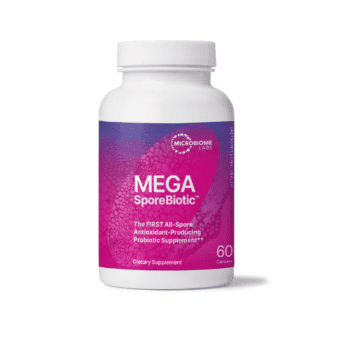
- Select options This product has multiple variants. The options may be chosen on the product page
MegaSporeBiotic
$59.99 – $176.95MegaSporeBiotic™ is a 100% spore-based, broad-spectrum probiotic shown to be...
-
MegaSporeBiotic For Kids Gummies
$26.10MegaSporeBiotic™ Gummies are a 100% spore-based proprietary probiotic blend that...
-
MegaMucosa
$59.99MegaMucosa is the first complete mucosal support supplement of its...
Get Social
Recent Podcasts
Recent Courses
Build Your Resilient Gut
An Exclusive Course with 10 Years of Microbiome
Kiran’s Professional Training Vault
If you’ve ever wanted all of Kiran’s best
Toxicity & Detoxification Masterclass 2024
The toxicity and Detoxification Masterclass covers a wide
Brain & Nervous System Masterclass 2024
19 Leading Experts Share Cutting-Edge Science, Effective Practices,
Autoimmune Masterclass 2024
Autoimmune Masterclass brings together 17 of the world’s
Get the RHT Newsletter
Be the first to get access to special offers, new podcasts, courses, products and events from Rebel Health Tribe.
Facebook
Twitter
Pinterest
LinkedIn
Reddit
WhatsApp
Telegram
StumbleUpon
-
HistaHarmony™
$46.99If you get fatigued, flushed, or foggy after...
-

- Select options This product has multiple variants. The options may be chosen on the product page
MegaSporeBiotic
$59.99 – $176.95MegaSporeBiotic™ is a 100% spore-based, broad-spectrum probiotic shown...
-
MegaSporeBiotic For Kids Gummies
$26.10MegaSporeBiotic™ Gummies are a 100% spore-based proprietary probiotic...
-
MegaMucosa
$59.99MegaMucosa is the first complete mucosal support supplement...
Build Your Resilient Gut
An Exclusive Course with 10 Years of Microbiome Knowledge Build Your Resilient Gut: Microbiome & Beyond with Kiran Krishnan is the
Kiran’s Professional Training Vault
If you’ve ever wanted all of Kiran’s best content in one place, here they are! These are the exact trainings
Toxicity & Detoxification Masterclass 2024
The toxicity and Detoxification Masterclass covers a wide array of topics with the following guests: 1. Lara Adler, Environmental Toxins
Brain & Nervous System Masterclass 2024
19 Leading Experts Share Cutting-Edge Science, Effective Practices, and Clinical Strategies to Optimize Brain & Nervous System Health in Kids


